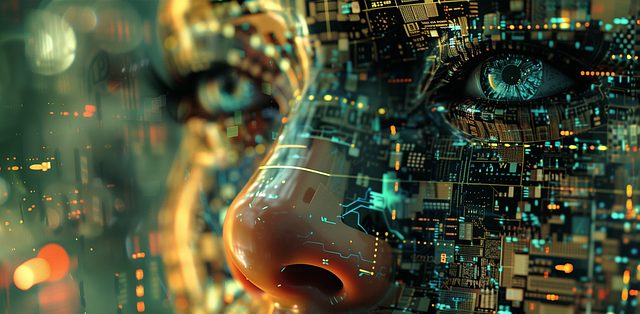Chatbots have undergone a remarkable transformation from rudimentary rule-based systems to sophisticated artificial intelligence tools powered by machine learning and deep neural networks. This evolution has been driven by advancements in natural language processing (NLP), which now enables chatbots to engage in complex dialogues, learn from interactions, and provide contextually relevant responses that closely resemble human communication. The journey of chatbots from their inception with ELIZA in the 1960s to the advanced AI entities of today has significantly expanded their applications across customer service, healthcare, and beyond. As NLP technologies continue to advance, we can expect chatbots to become even more accurate and nuanced, further enhancing user engagement and expanding their potential uses in various sectors. This progress not only revolutionizes how users interact with machines but also paves the way for chatbots to become an integral part of everyday life, offering personalized assistance and improving operational efficiency through conversational interfaces.
2023 has marked a pivotal juncture in the evolution of AI chatbots and Natural Language Processing (NLP), with advancements propelling these technologies into new realms of sophistication. This article delves into the transformative trajectory of chatbots, from rudimentary script-based responses to today’s nuanced conversational agents, powered by the intricate dance of algorithms and machine learning. We explore the milestones in NLP that have enabled machines to parse, understand, and generate human language with increasing proficiency. The synergy between chatbots and NLP has ushered in a new era of user interactions, offering seamless, intelligent conversations. As we navigate through the current landscape of applications, challenges, and future prospects for these technologies, it becomes clear that chatbots and NLP are not just reshaping customer service but are poised to redefine how humans and machines interact and learn from each other. This article provides a comprehensive overview, charting the progression from foundational concepts to the latest breakthroughs, and offers insights into the ethical implications and predictive models that will drive the next wave of innovation in this dynamic field.
- Exploring the Evolution of Chatbots and Natural Language Processing (NLP)
- 1. The Genesis of Chatbots: From Simple Scripts to Sophisticated AI Agents
Exploring the Evolution of Chatbots and Natural Language Processing (NLP)

The field of artificial intelligence has witnessed a remarkable transformation, particularly in the realm of chatbots and Natural Language Processing (NLP). Initially, chatbots were rudimentary systems that operated on pre-defined rules; they were limited to performing simple tasks and could not understand nuances in human language. Over time, the integration of machine learning algorithms has propelled chatbots into a new era. These advancements have allowed chatbots to interpret and generate human-like text, making interactions with users more seamless and natural. The evolution of NLP, a subset of AI that focuses on the interaction between computers and humans through natural language, has been pivotal in this progression. Today’s chatbots, powered by sophisticated NLP techniques, can handle complex conversations, learn from past interactions, and provide personalized responses that are contextually relevant. This shift from rule-based systems to data-driven models has not only enhanced user experience but also expanded the potential applications of chatbots across various industries, from customer service to healthcare. As NLP technologies continue to advance, we can expect even more sophisticated conversational agents capable of understanding and processing language with an ever-increasing degree of accuracy and sophistication.
1. The Genesis of Chatbots: From Simple Scripts to Sophisticated AI Agents

Chatbots have come a long way since their inception, evolving from rudimentary script-based systems to sophisticated artificial intelligence agents capable of handling complex human interactions. Initially, chatbots were nothing more than static responses to predefined queries, often amusing users with limited conversational abilities. ELIZA, introduced in the mid-1960s, was one of the earliest chatbots that used pattern matching and substitution methodology to simulate a Rogerian psychotherapist. Over the decades, advancements in technology and natural language processing (NLP) have propelled chatbots into an era where they can understand and generate human-like text. The integration of machine learning algorithms and deep neural networks has enabled these AI agents to learn from interactions, improve their understanding of context, and deliver responses that are increasingly indistinguishable from those a human might provide. Today’s chatbots can handle a wide array of tasks, including customer service inquiries, booking appointments, and even providing companionship. The progression of AI chatbots is a testament to the strides made in NLP, showcasing their potential to evolve further and become integral components of various industries, enhancing user experience and streamlining operations through intelligent, conversational interfaces.
In recent years, the advancements in chatbot technology and natural language processing (NLP) have marked a significant leap forward, transforming how businesses interact with customers and how individuals engage with machines. From their humble beginnings as rudimentary script-driven entities, today’s AI-powered chatbots exhibit an impressive understanding of human language, enabling seamless and intuitive conversations. As this technology continues to evolve, the potential applications for chatbots are boundless, promising to redefine user experiences across various sectors. The convergence of AI and NLP represents a pivotal moment in the history of human-computer interaction, with chatbots poised to become an integral part of our digital lives.
